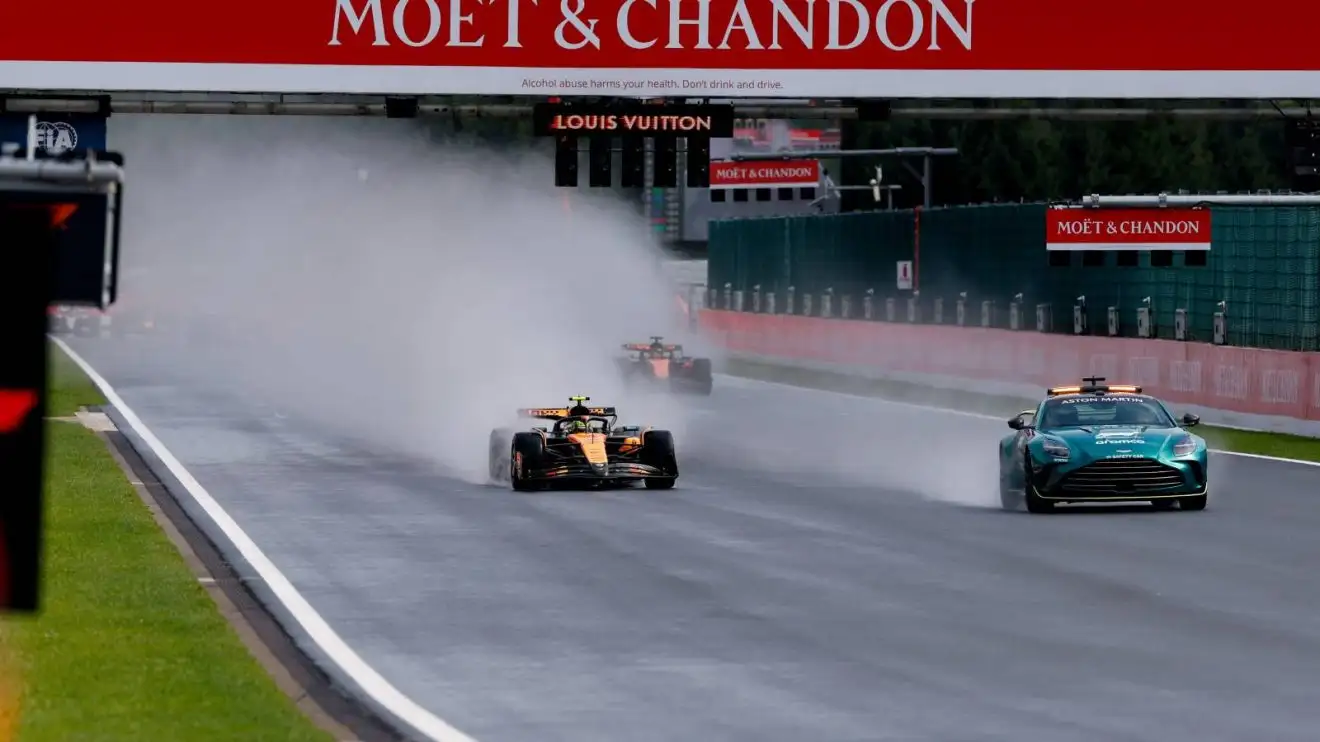Formula 1 drivers are increasingly vocal about the hazardous conditions faced during wet race starts, highlighting significant safety concerns amidst the powerful spray generated by current ground effect machinery. This contentious issue, central to F1 Safety, puts drivers in a dilemma, often making them appear reluctant to race, despite their commitment to competitive action on the track.
Williams driver Alex Albon recently articulated these prevalent concerns, specifically addressing the challenges encountered during the delayed Wet Race start at the Spa-Francorchamps circuit. His insights underscore a widespread sentiment among the grid regarding the visibility crisis when racing under heavy rain, emphasizing the crucial need for optimal conditions.
A primary factor contributing to this perilous situation is the aerodynamic design of the contemporary Ground Effect Cars. These machines, while excelling in dry conditions, displace an unprecedented volume of water, creating dense, blinding spray that severely obstructs drivers’ sightlines, particularly in the mid-pack, posing a significant challenge to F1 Safety.
The incident at Spa served as a critical case study, where drivers largely concurred with the FIA’s decision to delay the race. However, the rapid drying of the track shortly after the start meant that participants quickly transitioned from intermediate tyres to slicks, raising questions about the initial delay’s perceived necessity by some observers of the Formula 1 event.
Albon further elaborated on the “almost impossible job” facing the Fédération Internationale de l’Automobile (FIA) in accurately assessing wet track conditions. While a clear track might be perfectly suitable for wet tyre starts, the overwhelming spray renders visibility near zero, posing an immense safety challenge that often leads to controversial race management decisions by the FIA.
The drivers’ vocal concerns often lead to public perception issues, as Alex Albon noted, “we look weak.” This sentiment arises from a frustration that their genuine safety apprehensions are misconstrued as reluctance or complaint, despite the clear danger of navigating at high speeds with severely limited forward vision during a Wet Race.
Driving at speeds exceeding 250 kilometers per hour with less than 20 meters of visibility is, as Albon starkly put it, “the worst feeling.” This critical safety threshold is frequently breached in current wet conditions, forcing Formula 1 drivers to rely on intuition and the faint outlines of cars ahead, significantly increasing the risk of high-speed incidents and compromising F1 Safety.
Despite the inherent difficulties, the FIA is reportedly attuned to driver feedback and actively seeks solutions to mitigate these issues. Continuous monitoring of track conditions and ongoing research into technological advancements for spray reduction or enhanced visibility remain pivotal areas for improvement within the sport, demonstrating the FIA’s commitment.
The fundamental dilemma lies in the disparity between the full wet tyre’s performance capability and the actual track conditions, which often prove too wet to ensure adequate visibility for Formula 1 racing. Bridging this gap is crucial for ensuring both driver safety and the integrity of Formula 1 racing in adverse weather conditions.






Leave a Reply